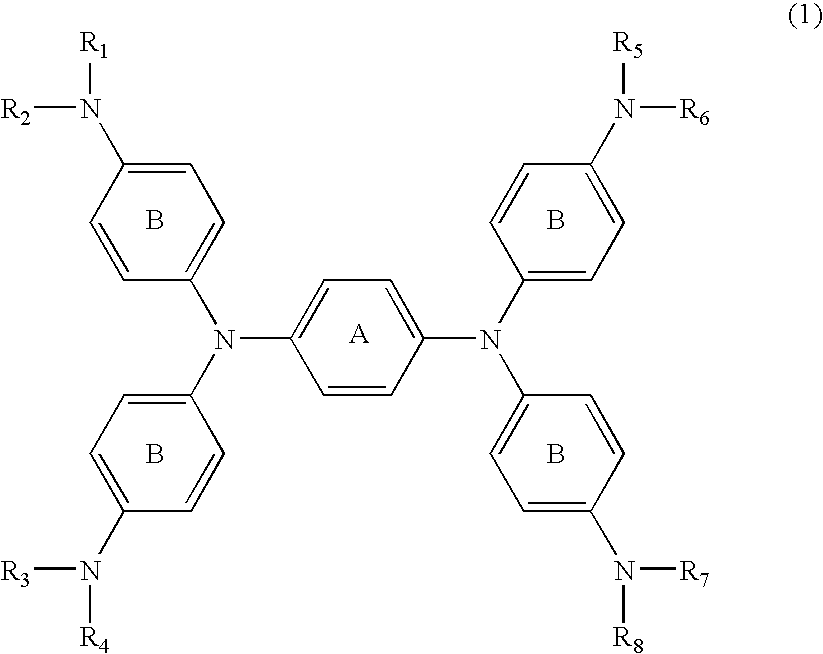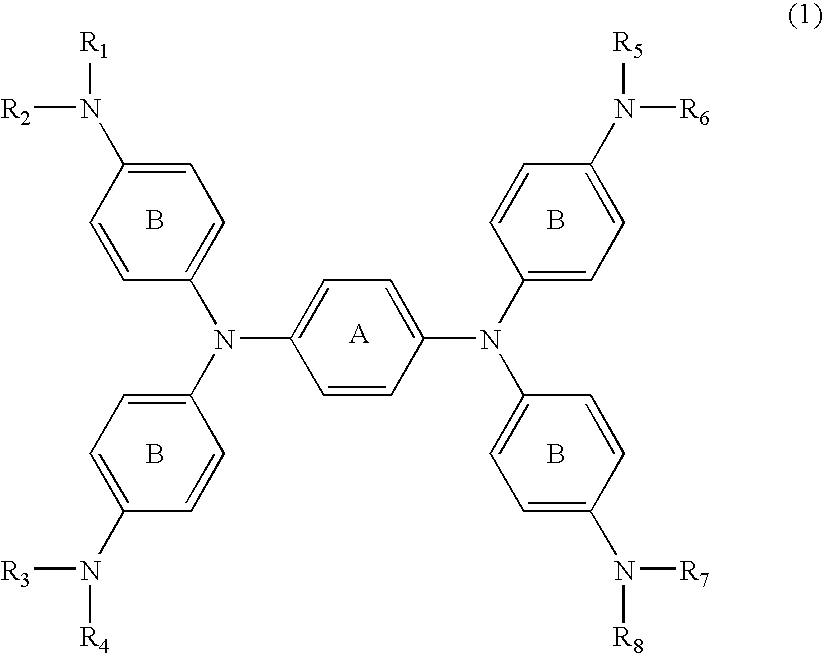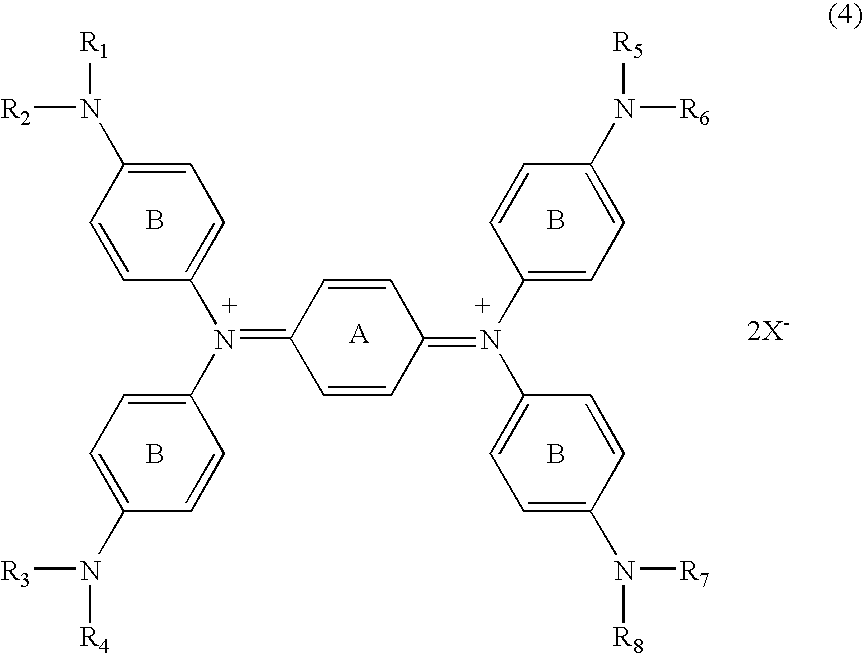Near-infrared absorbing compound and near-infrared absorbing filter using same
- Summary
- Abstract
- Description
- Claims
- Application Information
AI Technical Summary
Benefits of technology
Problems solved by technology
Method used
Image
Examples
example 1
Synthesis Example 1
(Synthesis of the Compound of No. 37 in Table 4)
[0050] Into 10 parts of DMF was added 1.8 parts of
[0051] N,N,N′,N′-tetrakis{p-di(n-butyl)aminophenyl}-p-phenylened iamine which was then heated to 60° C. for dissolution, followed by adding 1.08 parts of silver trifluoromethanesulfonate dissolved in 10 parts of DMF before reaction for 30 minutes. After cooling, the deposited silver was filtered off. To the reaction liquid (filtrate) was slowly added dropwise 20 parts of water, followed by stirring for 15 minutes. The generated black crystal was filtrated and washed with 50 parts of water, followed by drying the resultant cake to provide 2.3 parts of the compound of No. 37.
λmax: 1,100 nm (dichloromethane)
synthesis example 2
(Synthesis of the Compound of No. 39 in Table 4)
[0052] The same reaction was carried out as that in Example 1 except for the use of
N,N,N′,N′-tetrakis{p-di(i-amyl)aminophenyl}-p-phenylenedi amine in place of
N,N,N′,N′-tetrakis{p-di(n-butyl)aminophenyl}-p-phenylened iamine to provide the compound of No. 39.
λmax: 1,104 nm (dichloromethane)
synthesis example 3
(Synthesis of the Compound of No. 38 in Table 4)
[0053] The same reaction was carried out as that in Example 1 except for the use of
N,N,N′,N′-tetrakis{p-di(i-butyl)aminophenyl}-p-phenylened iamine in place of
N,N,N′,N′-tetrakis{p-di(n-butyl)aminophenyl}-p-phenylened iamine to provide the compound of No. 38.
λmax: 1,106 nm (dichloromethane)
PUM
| Property | Measurement | Unit |
|---|---|---|
| Thermal resistance | aaaaa | aaaaa |
Abstract
Description
Claims
Application Information
 Login to View More
Login to View More - R&D
- Intellectual Property
- Life Sciences
- Materials
- Tech Scout
- Unparalleled Data Quality
- Higher Quality Content
- 60% Fewer Hallucinations
Browse by: Latest US Patents, China's latest patents, Technical Efficacy Thesaurus, Application Domain, Technology Topic, Popular Technical Reports.
© 2025 PatSnap. All rights reserved.Legal|Privacy policy|Modern Slavery Act Transparency Statement|Sitemap|About US| Contact US: help@patsnap.com



